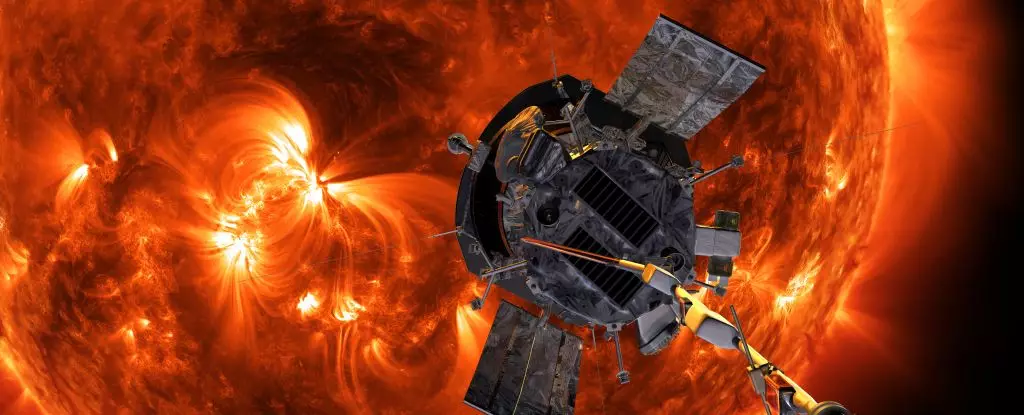As we approach December 24, 2023, a milestone in the exploration of our solar system looms on the horizon. NASA’s Parker Solar Probe is set to break records as it embarks on its 22nd close flyby, drifting perilously close to the Sun—specifically, just around 6.1 million kilometers (3.8 million miles) from the solar surface. At speeds nearing 192 kilometers per second, this spacecraft will not only become the closest human-made object to the Sun but will also reach unprecedented velocities. This event symbolizes humanity’s relentless quest for knowledge as it answers age-old questions regarding the solar dynamics that govern our cosmic neighborhood.
The Parker Solar Probe, launched in 2018, was engineered specifically to endure the extreme conditions of the Sun’s atmosphere, also known as the solar corona. With its state-of-the-art carbon heat shield designed to withstand soaring temperatures exceeding 1,370 degrees Celsius, Parker has the resilience required for this audacious mission. After extensive preparation and successful updates from the spacecraft, NASA has confirmed that Parker is fully operational and ready for its historic dive. This upcoming perihelion will serve as the precursor to several more planned flybys in 2025, all aimed at gathering critical scientific data.
One of the primary scientific objectives of the Parker Solar Probe is to unravel the enigma surrounding the solar atmosphere. Notably, one key question lies in understanding why the corona reaches temperatures that vastly exceed that of the Sun’s visible surface, or photosphere. This paradox suggests complex underlying processes, perhaps related to magnetic phenomena, are at play. Moreover, the investigation aims to shed light on the Sun’s magnetic field generation and the intricate cycles of solar activity that fuel both solar storms and the auroras enjoyed on Earth.
The data collected during the probe’s flybys will significantly advance our comprehension of solar physics, potentially leading to breakthroughs that could enhance predictive models for solar weather. As the probe sweeps through the Sun’s plasma, researchers hope to gain insights that will not only advance theoretical frameworks but may also find applications in protecting Earth’s technology from the hazardous effects of solar output.
The significance of the Parker Solar Probe extends beyond scientific exploration; it is celebrated as a testament to human ingenuity and ambition. As astrophysicist Nour Raouafi remarked, we are approaching the Sun as if we are “almost landing on a star.” This mission can be likened to the Moon landing of 1969, an achievement that set the stage for humanity’s future in space exploration. It signifies not just a technological accomplishment but also a symbolic endeavor that unites researchers, engineers, and enthusiasts globally under the banner of scientific curiosity.
The probe’s upcoming perihelion, along with the subsequent flybys scheduled for 2025, constitutes critical steps in probing regions of space that have remained largely unexplored. Each mission brings forth the possibility of new discoveries that could reshape our understanding of fundamental astrophysical processes.
One of the more poignant aspects of the Parker Solar Probe’s mission is its eventual fate. As projected, this revolutionary spacecraft is likely to meet its end in a dramatic display—running out of propellant needed for trajectory control, leaving it at the Sun’s mercy. It could become incinerated as it succumbs to the very forces it was sent to study. This tragic yet poetic closure adds a layer of depth to the mission, illustrating the inevitable conclusion of human endeavors intertwined with cosmic forces.
The Parker Solar Probe stands as an apex of human achievement, pushing the boundaries of our scientific understanding while navigating the complexities of space. Through its daring mission, we stand on the cusp of groundbreaking revelations about our Sun, propelling the human spirit of inquiry into realms previously thought unreachable. As we await the data from this audacious venture, we are reminded that the quest for knowledge is as igniting as the fiery orb we seek to understand.

